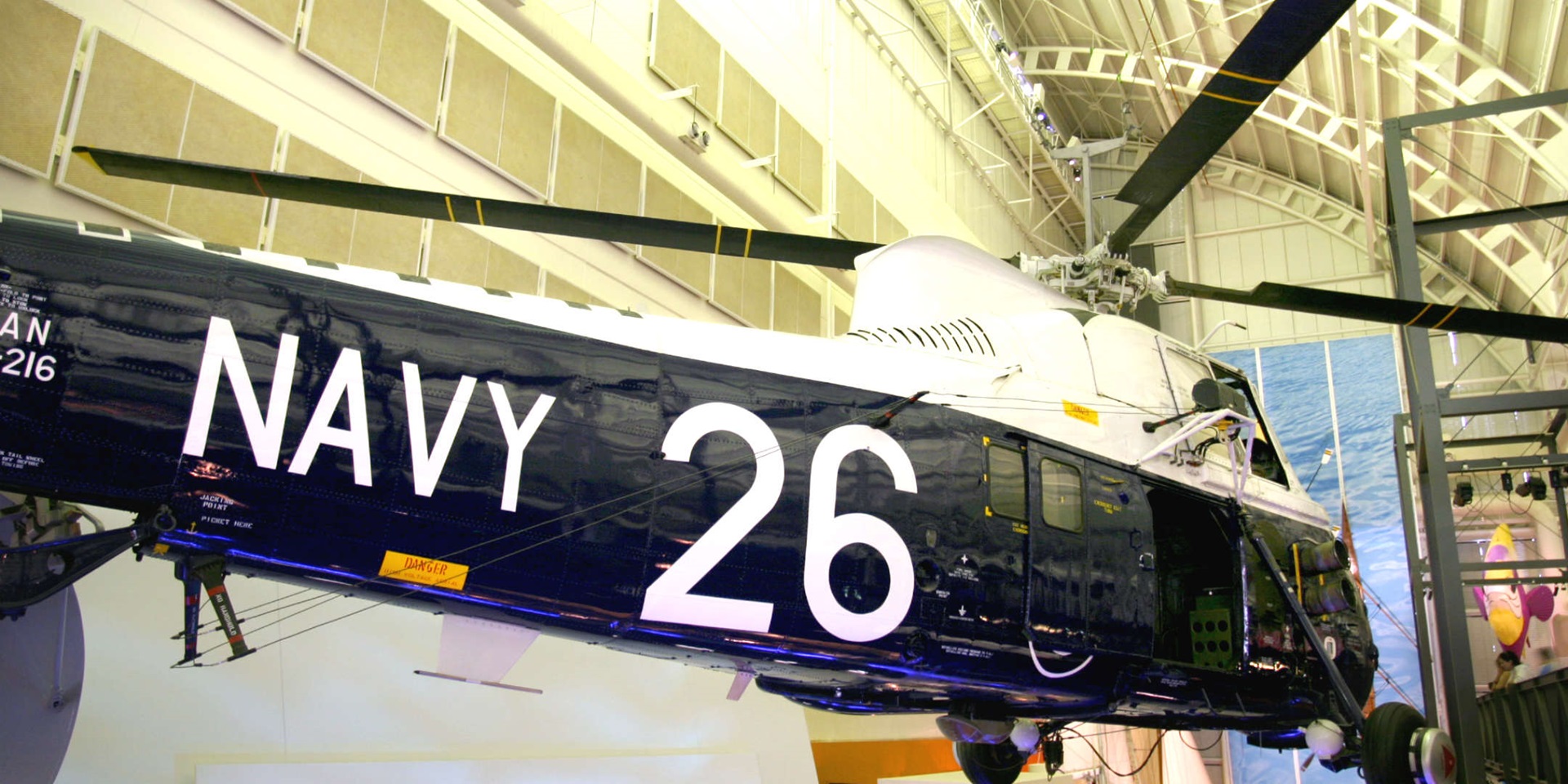

Westland Wessex helicopter inside the museum
As a tribute to the last flight of the Royal Australian Navy Sea King helicopters today, we’ve chosen the Westland Wessex helicopter as our Object of the Week.
This particular helicopter hangs inside the Navy Gallery at the museum, so you can come along and see it on your next visit.
The Royal Australian Navy’s Fleet Air Arm used these helicopters for anti-submarine warfare, air-sea rescue, training and utility support. They operated out of HMAS Albatross (the Navy’s air station at Nowra, NSW) and from on board naval vessels.
The first of the 27 Westland Wessex helicopters ordered from England in 1962 were delivered in 1963. They were numbered consecutively WA200 – WA226 by the manufacturer and operated in the RAN’s 725 and 817 squadrons. The Museum holds number 216.
Between 1968 and 1970 a number of improvements and upgrades were made, including incorporation of the US AN/AQS-13 sonar system for underwater detection of submarines, installation of the high powered 1600 shp (1195 kw) Napier Gazelle Mark 165 turboshaft engine, improved tacan navigation and ultra high frequency (UHF) communication systems, and a Hudat station keeping radar.
For the next 13 years, the Wessexes were used in utility, search and rescue operations until phased out of service in 1989. They were beneficial during the aftermath of Darwin’s Cyclone Tracy in 1974. The Wessex was replaced by the Westland Sea King Mark 50 anti-submarine helicopter.
Specs:
The crew: two pilots, one observer, and one aircrewman
Range: 290 nautical miles
Operational speed: 195 km/h
Rotor diameter: 19.49 metres
Length: 20.10 metres overall; 11.73 metres folded
Service ceiling: 3,050 metres
